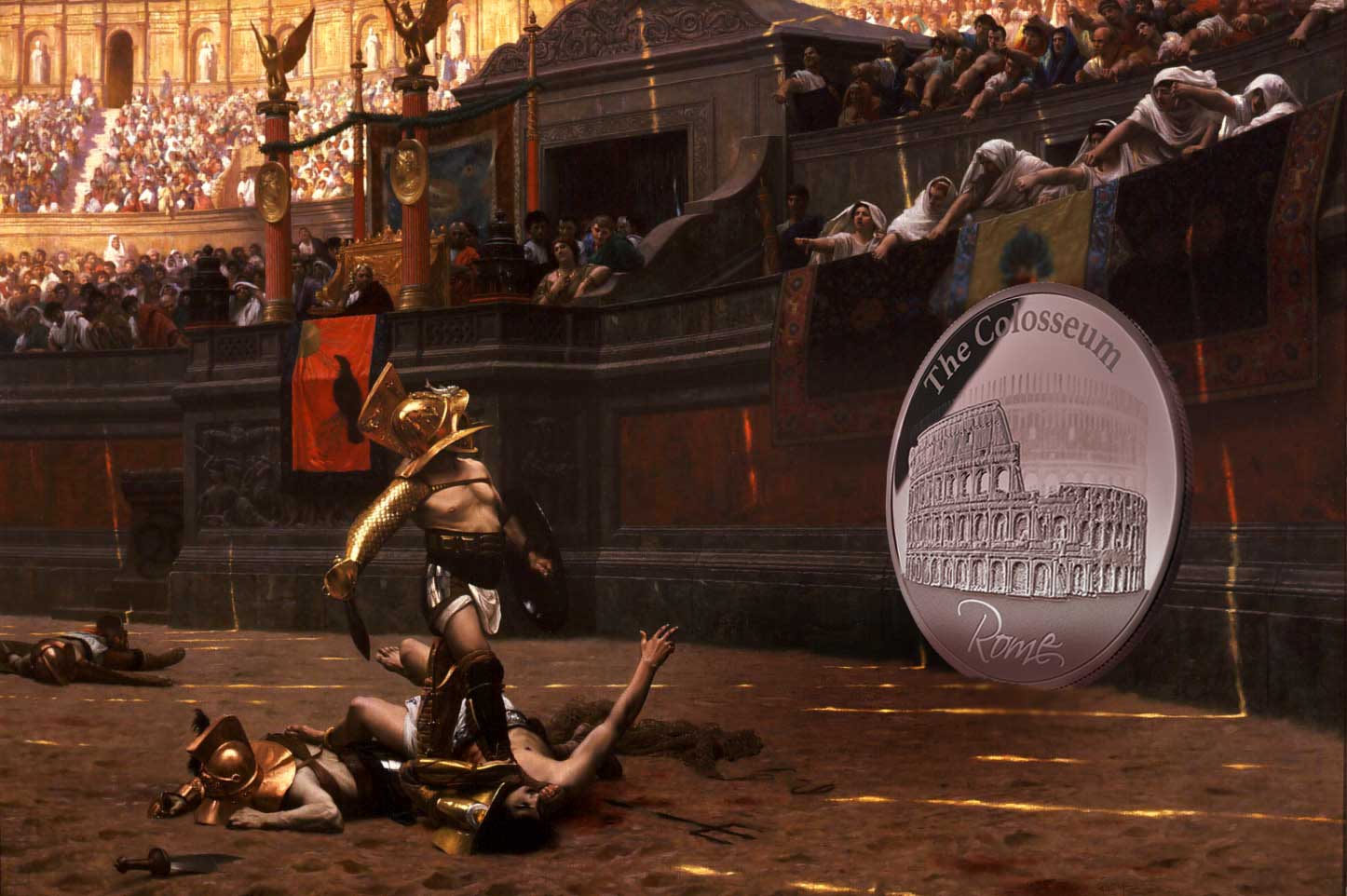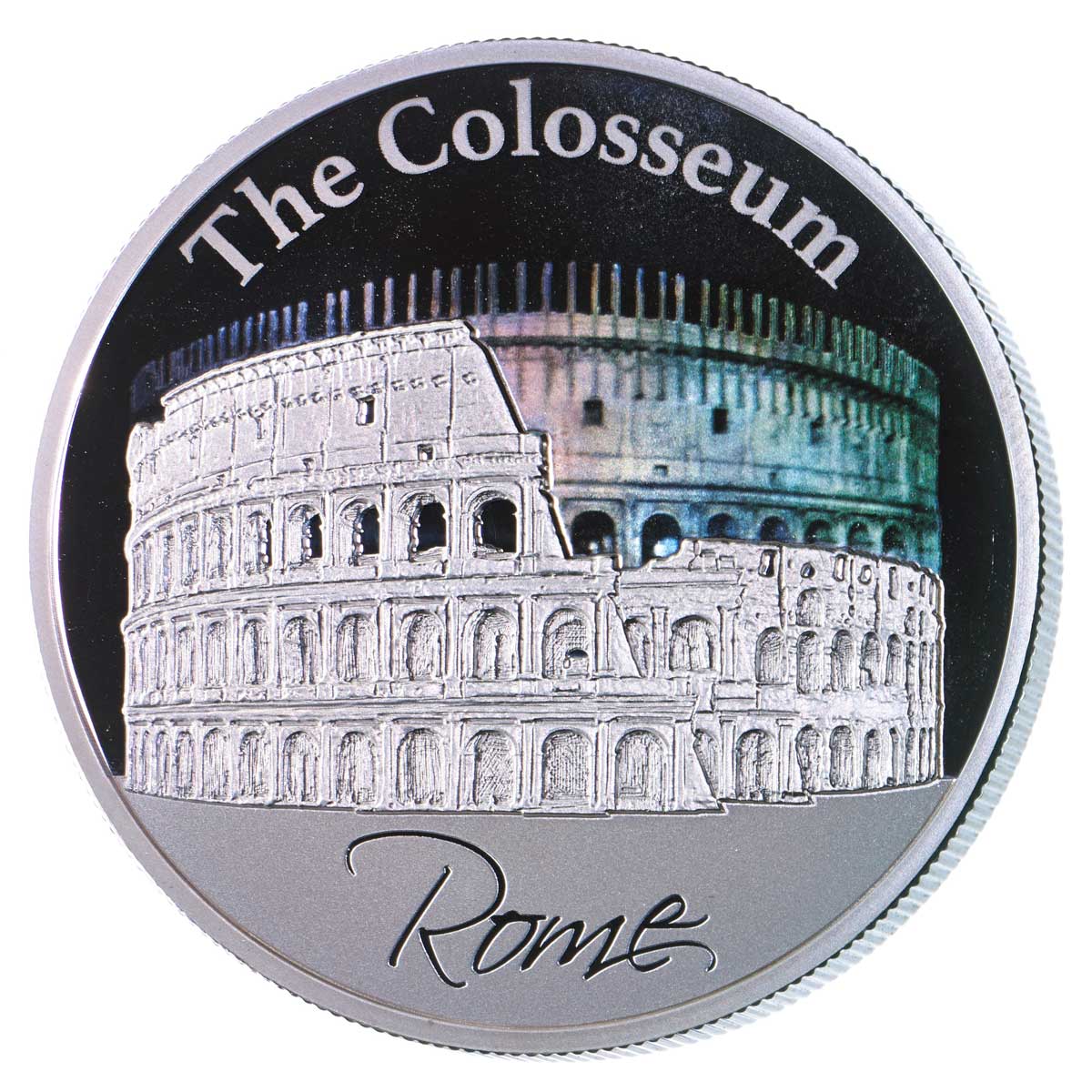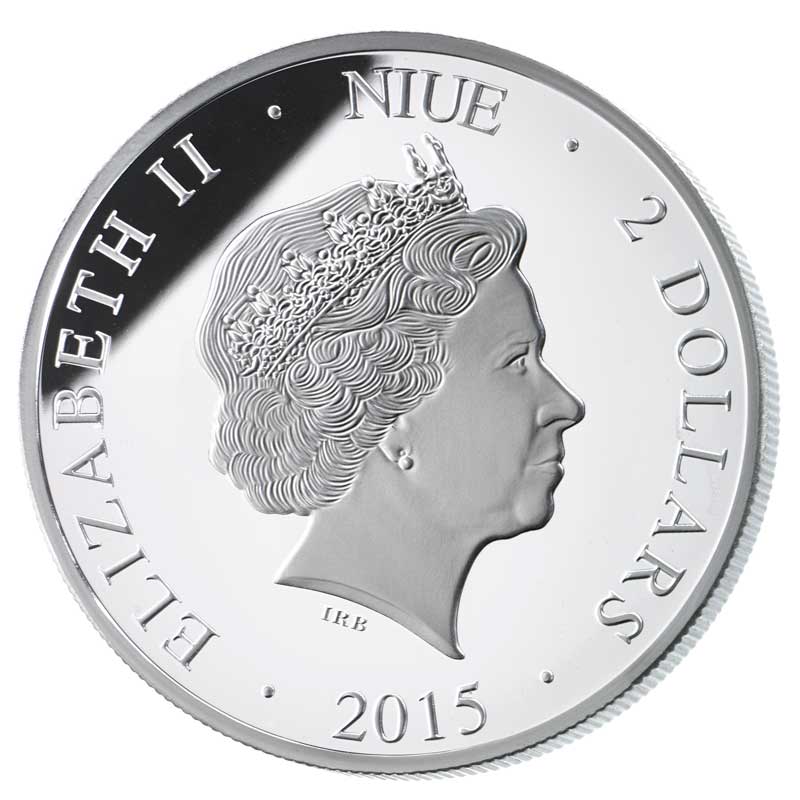We’ve had a few Roman Colosseum coins recently, from Coin Invest Trust’s entrant in their seemingly never-ending World of Wonders series, through to a two-coin set in a replica of the stadium from International Coin House. Most have been simple affairs, just pad-printed silver rounds, but here we have something quite a bit different. At first glance this looks like a simple, nice quality clean-struck silver coin, but in the background sits an apparently new type of hologram technology.
Whatever the type of hologram actually is, the interesting thing here is the innovative application of it. At first glance the coin depicts a version of the famous Roman landmark in it’s current state. When the light hits the coin in a certain way, the background displays the missing parts to create an image of what the Colosseum looked like when it was constructed. It’s quite clever and with this being the first coin in a new series, we’re sure they’ll be some equally cool coins yet to come.
Lots of collectors bemoan the application of pointless colour, gem or other insert in a lot of coins just for the sake of it, but this is one of those occasions when the coin is genuinely enhanced by it. Can’t wait to see one in the flesh. Released by a European coin producer that doesn’t sell direct to the public, we’ve currently seen it for sale at Numiscollect and Minted-UK, but we’re sure others will have it soon. Packaging is unlikely to be as intricate as the ICH coin, but MNI do some cool packaging on many of their products, so here’s hoping.
MINTS DESCRIPTION
The Colosseum, also known as the Flavian Amphitheatre in the centre of the city of Rome, Italy. is the largest amphitheatre in the world, and is considered one of the greatest works of architecture and engineering of mankind!
Construction began under the emperor Vespasian in 72 AD, and was completed in 80 AD under his successor and heir Titus. Further modifications were made during the reign of Domitian (81–96). These three emperors are known as the Flavian dynasty, and the amphitheatre was named in Latin for its association with their family name Flavius.
The Colosseum could hold, it is estimated, between 50,000 and 80,000 spectators, and was used for gladiatorial contests and public spectables such as sea battles, animal hunts, executions, re-enactments of famous battles, and dramas based on Classic mythology. The building ceased to be used for entertainment in the early medieval era. It was later reused for such purposes as housing, workshops, quarters for a religious order, a fortress, a quarry and a Christian shrine.
Although in the 21st century it stays partially ruined because of damage caused by devastating earthquakes and stone-robbers, the Colosseum is an iconic symbol of Imperial Rome. In 2007 the complex was included among the New 7 Wonders of the World!
SPECIFICATION
| DENOMINATION | COMPOSITION | WEIGHT | DIAMETER | FINISH | MINTAGE | BOX / COA |
|---|---|---|---|---|---|---|
| $2 NEW ZEALAND | 0.999 SILVER | 31.1 g | 40.00 mm | PROOF | 3,000 | YES / YES |
ADVERTISEMENTS










Just got one. Love it! Well done and worth $100, which is what I paid. Great box too.